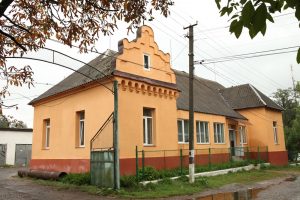Irshava, Ukraine
Iршава, Украïна
Irshava was part of the Kingdom of Hungary (11th century – 1920 and 1938-1944) with the name of Ilosva in Bereg megye (county), next part of Czechoslovakia (1920-1938) with the name of Iršava in Podkarpatská Rus (Sub-Carpathia), then part of the Ukrainian Soviet Socialist Republic (1945-1991) with the name of Irshava and, since 1991, known as Irshava, in the Irshavsky (Irshavs’kyy) rayon (district) of Zakarpats’ka oblast (county) of Ukraine.
Other spellings/names for Irshava are Irszawa and Irschawa. In Yiddish, Irshava was known as Orsheve.
Irshava is located about 18 miles SE of Mukacheve (Munkács) and 15 miles NW of Khust (Huszt).
Irshava was first mentioned in 1341.
Jews probably settled in Irshava in the first half of the 18th century.
Two Jewish families were present in 1768.
In 1830, the Jewish population was 18, rising in 1880 to 101 (of a total population of 972).
By 1921, under Czechoslovakia rule, the Jewish population of Irshava reached 771. There was a Jewish elementary school and a cheder (religious school) for 70 students.
In 1941, the Jewish population climbed to 1,393 inhabitants.
Among the Jewish breadwinners were 32 families that earned their livelihoods from commerce and 29 from crafts. A few Jews belong to the professional class and the community included three doctors and three lawyers.
With the Hungarian occupation of Irshava in March, 1939, Jews were pushed out of their occupations. About 100 were drafted into forced labor battalions in 1940-41 and others were drafted for service on the Eastern front, where most died.
In August, 1941, the number of Jewish families without Hungarian citizenship were expelled to Nazi occupied Ukrainian territory, to Kamenets-Podolski, and murdered there.
The remaining 1,350 Jews of Irshava were deported to Auschwitz on 24 May 1944.
A great many of the Jews from Irshava were murdered in Auschwitz and a few survivors returned, but eventually settled elsewhere.
In 2001, Irshava had about 10,311 inhabitants and no Jews live there today. Irshava has an abrasives plant, an industrial-machine-repair plant, several food-processing plants, a cotton-textiles mills and a furniture factory. Lignite coal, limestone and marble are mined in its vicinity.
https://kehilalinks.jewishgen.org/Irshava/
